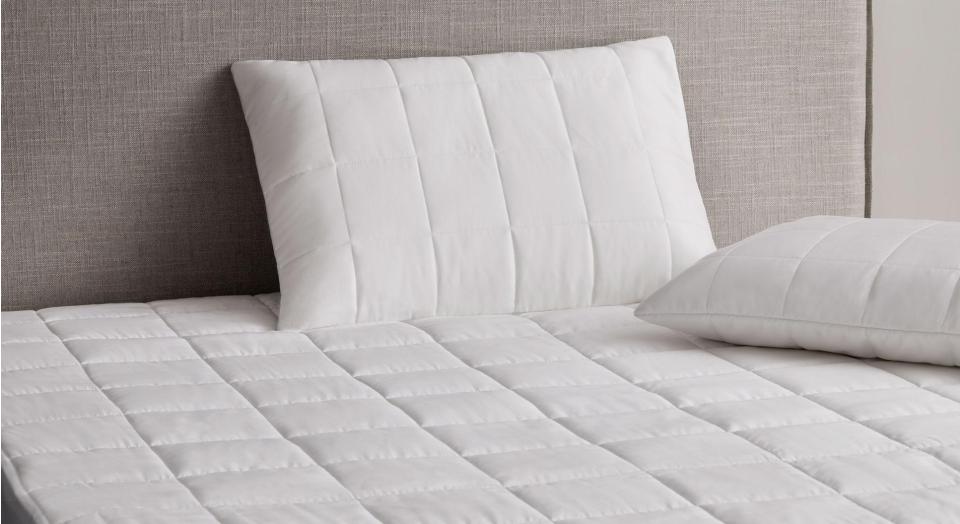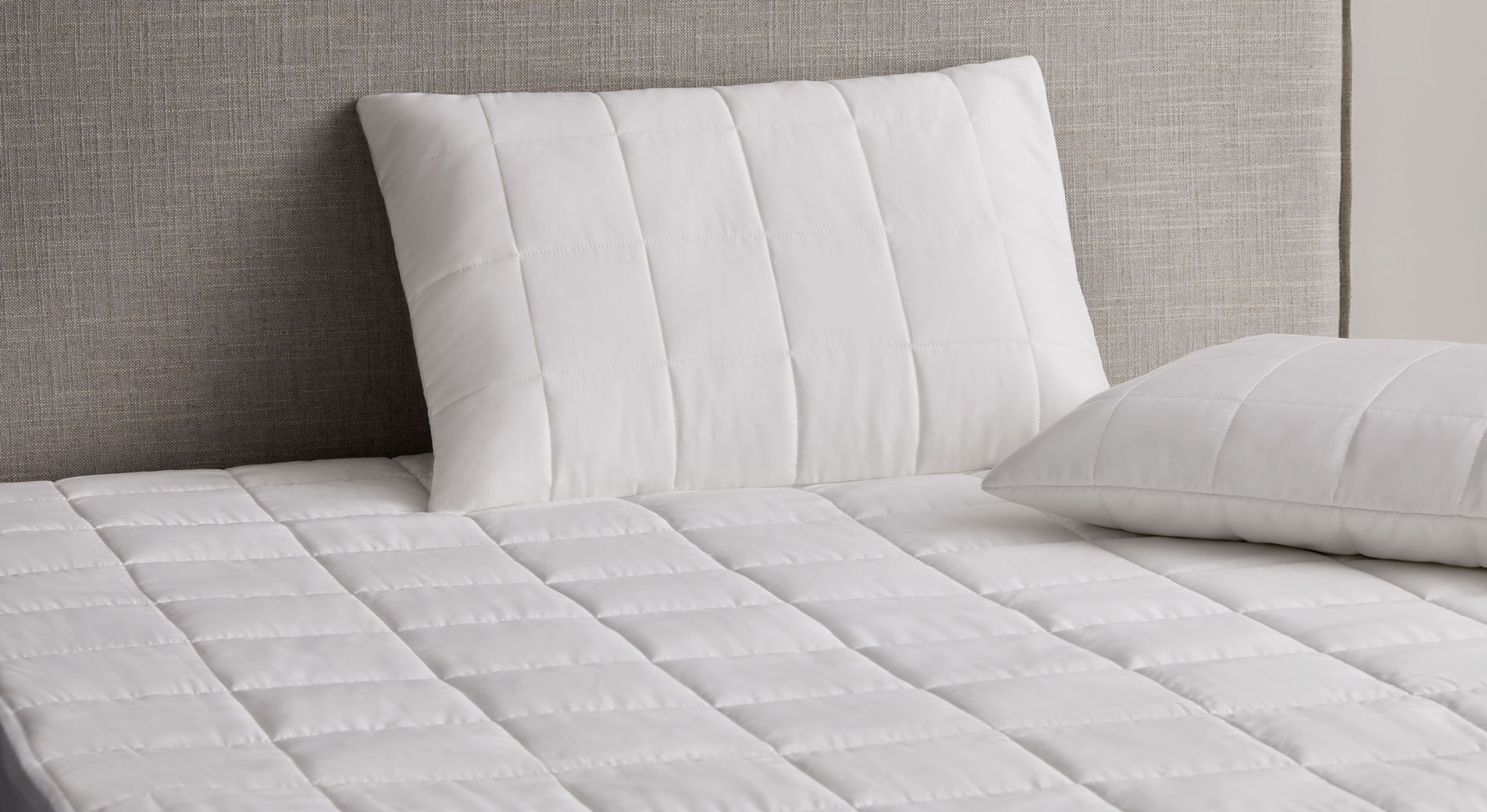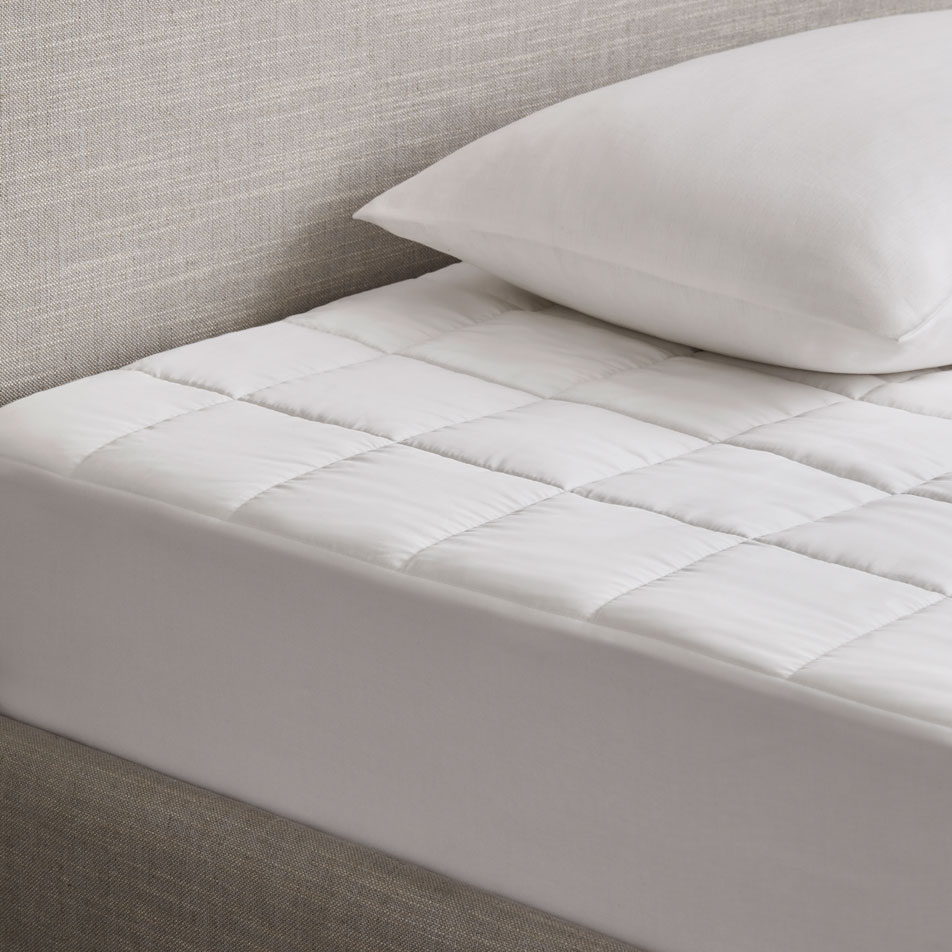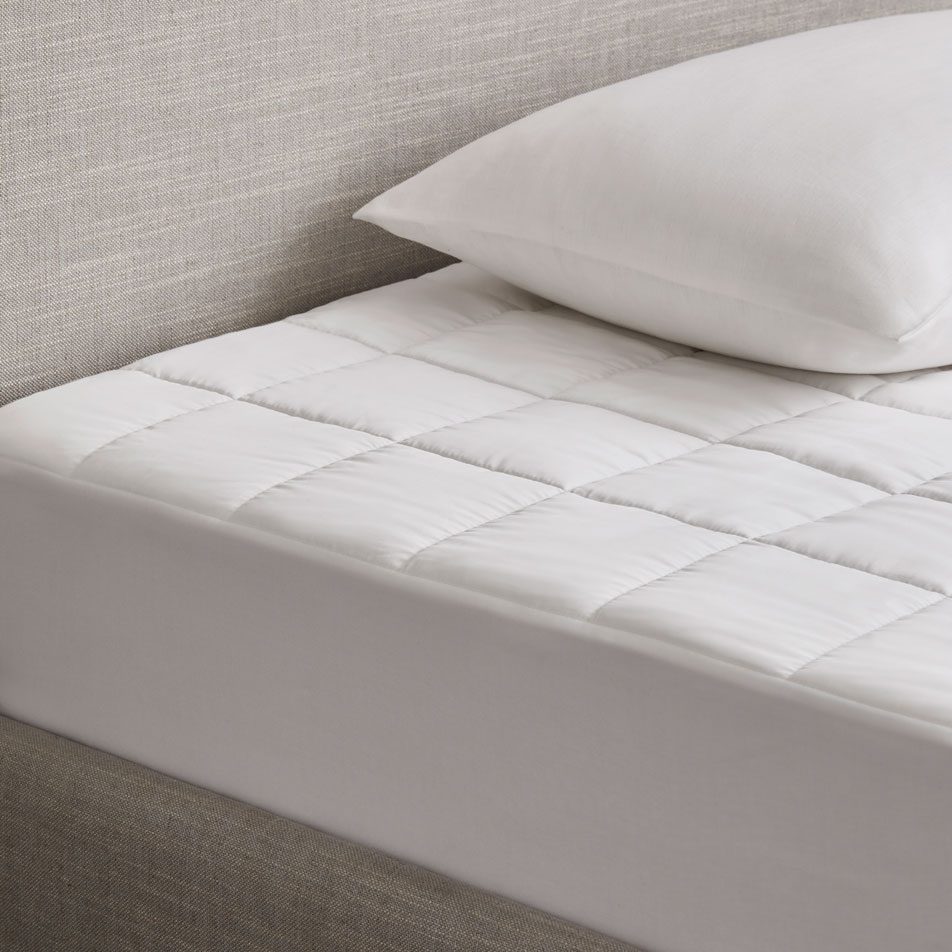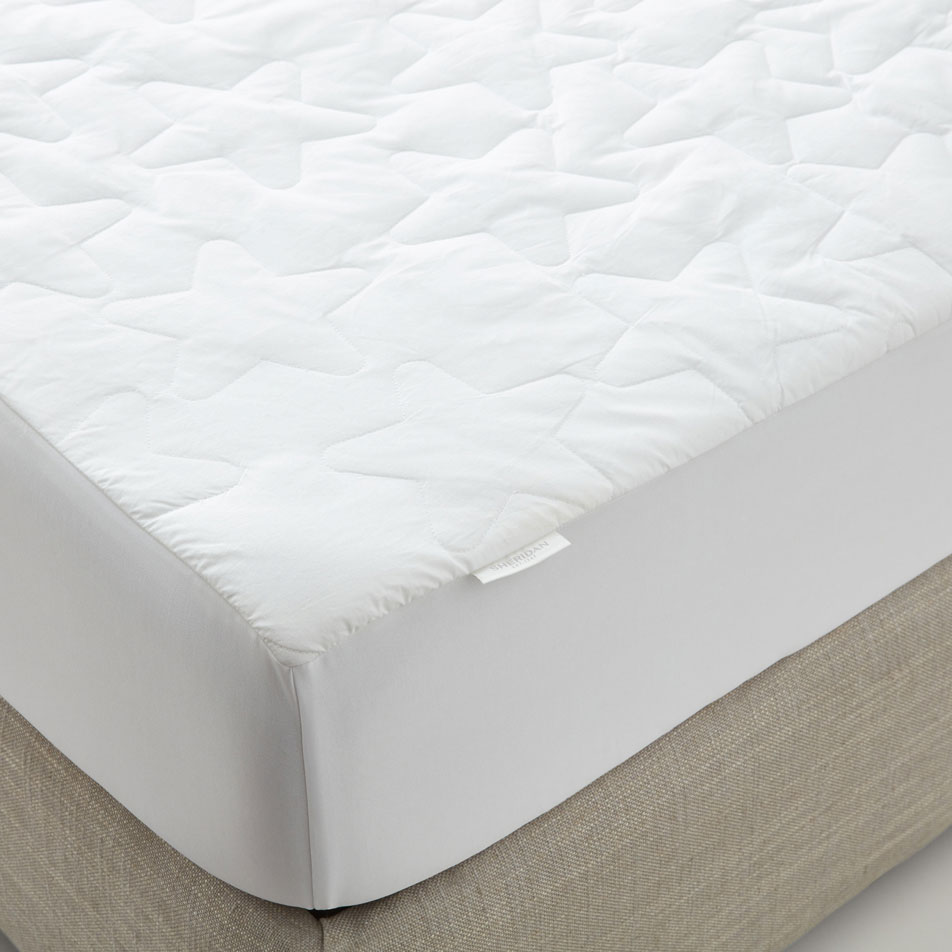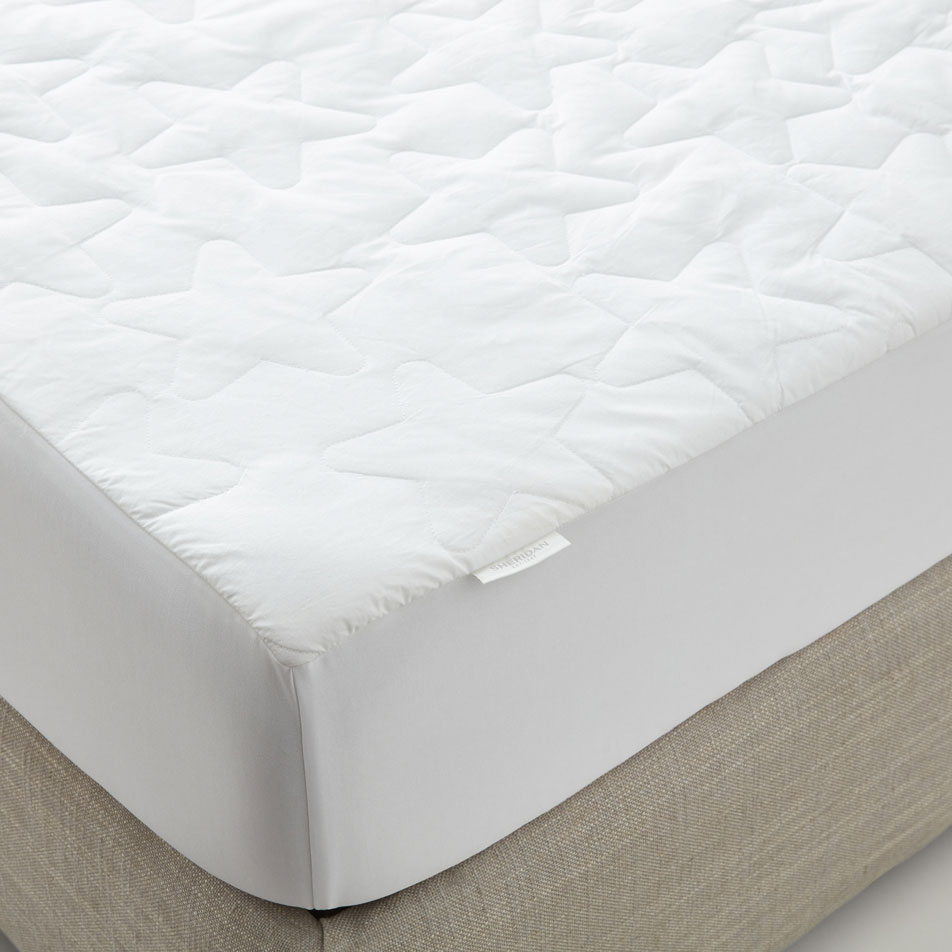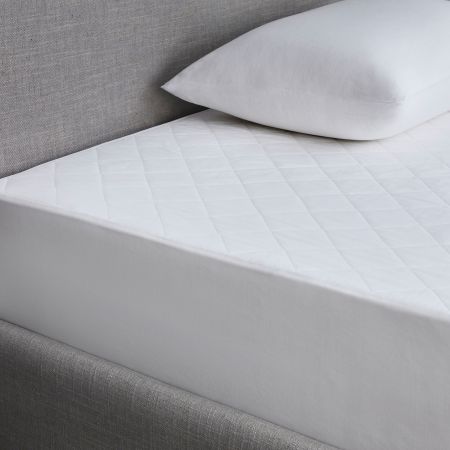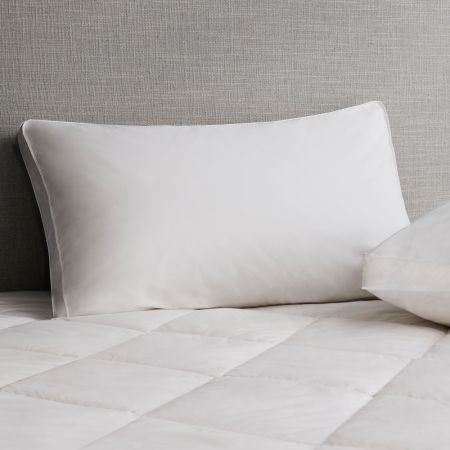A Complete Guide to Washing Your Mattress Protector
Ah, mattress protectors. The unsung heroes of the bedding world. Often overlooked, mattress protectors play an important part in prolonging the life of our precious beds and helping us to achieve a hygienic night’s sleep. Both of these things sound pretty important, right? Which is why we’re here to discuss all things mattress protector care — so that you can look out for your protector, while it looks out for you.
Most of us are likely guilty of having a “set it and forget it” mindset when it comes to our mattress protectors. But sure enough, every so often when we’re changing our sheets (which we should be doing around once every 1-2 weeks, by the way), we might find ourselves wondering — can you wash a mattress protector? And if so, how do you wash a mattress protector?
Let’s get into it.
The Basics
First things first, let's start with some quick-fire questions.
What do mattress protectors do?
Mattress protectors provide a protective barrier between our mattress and the big, wide world (well, the world of your bedroom). This barrier helps to prevent things like dust, sweat, germs and all sorts of late-night snack debris from finding their way into your mattress.
Do you need a mattress protector?
We highly recommend having a mattress protector on your bed. Not only do they help us keep our beds hygienic, but they prolong the life of our mattresses by helping to prevent damage like stains and bacteria growth (we know, ick). Mattress protectors are also a great way to keep allergies at bay, by preventing the build-up of some pretty common allergens. Dust allergy sufferers, we’re looking at you.
Should you wash your mattress protector?
The short answer: yes. As we mentioned, mattress protectors keep our mattresses clear of all sorts of debris and irritants. Washing your mattress protector will make sure you’re removing these nasties from your bed entirely.
How often should you wash your mattress protector?
As a general rule, your mattress protector should be washed — by the suggested method — every 1-2 months. For those of us with allergies, you might want to wash more frequently to keep allergens at bay.
How to wash a mattress protector
First things first, always follow the care instructions on product labels. This will help you keep your bedding in its best condition and get the most out of your mattress protector.
If your mattress protector is machine washable, we recommend choosing a warm, gentle cycle. Washing your mattress protector on a warm cycle (around 40 degrees Celsius) will make it easier to remove oils and germs without damaging the fabric. It’s the same reason we recommend using gentle detergents that are free from things like bleach and Optical Brightening Agents (OBAs), which can cause damage and discolouration to certain fibres.
Choosing a gentle cycle protects the fibres used in the product construction. Translation: it’s better for the fabric. Slow cycles mean that your items spend longer in the wash, ensuring that dirt, body oils, and detergent are all rinsed out of the fabric properly.
You can keep any optional extras like fabric softener in the cupboard for this one — they aren’t necessary when washing your mattress protector.
How to spot-clean a mattress protector
Although every other month is the recommended frequency to wash your mattress protector, sometimes life just happens. If any spills occur, spot-cleaning your mattress protector can help avoid staining.
When spot-cleaning, it’s important to be gentle to avoid damaging the fabric of your mattress protector. Use a damp cloth with some mild detergent (we repeat, not bleach) to remove any excess surface spillage. Rather than scrubbing aggressively, try soaking the area and blotting out the stain — repeat this process until you see the stain begin to lift.
Handy hint: when practical, treat stains as quickly as possible after they appear. This will give you your best (and easiest) chance at removing any unwanted marks.
How to dry a mattress protector
In between washes, when it comes to how to dry a mattress protector, we recommend air drying your mattress protector over several lines to release any moisture. If you live in an apartment or just don’t have access to a clothesline, a clothes-drying rack will work too (you know, those foldable ones that never quite fit back in the cupboard when you want them to). Gently pull your mattress protector into shape before hanging it out to dry. To avoid any bacteria or funky damp smells, always make sure your mattress protector is completely dry before taking it off the line.
Fun fact: The sun acts as a natural antibacterial agent, helping keep your mattress protector hygienic and fresh.
